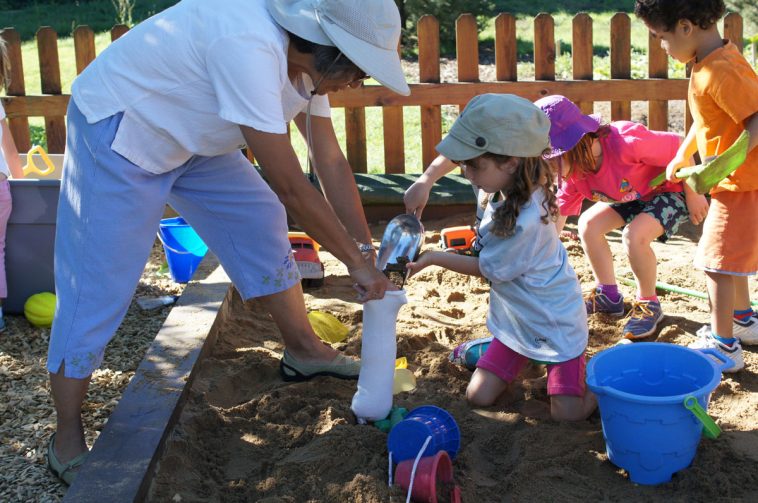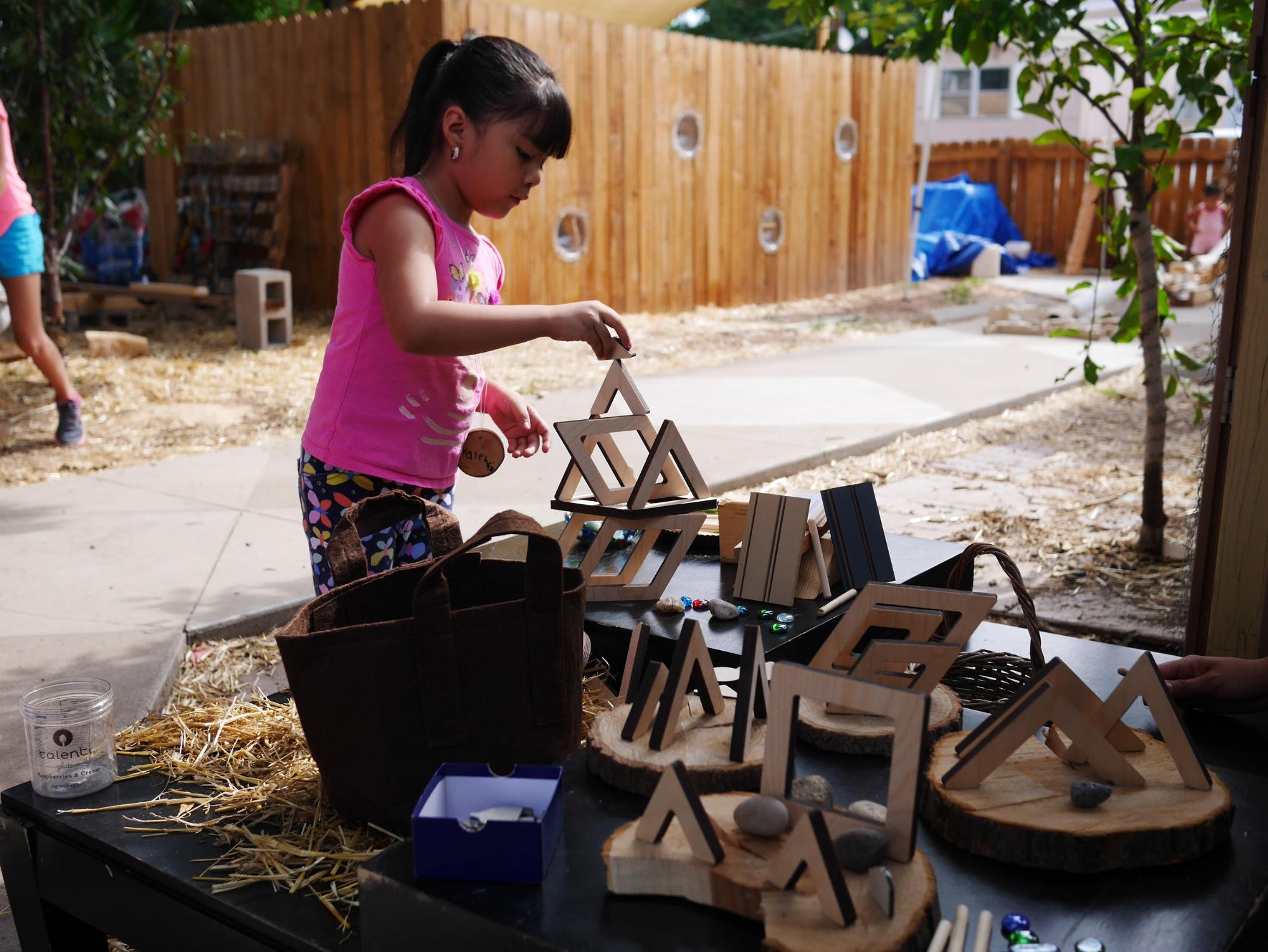This post was contributed by Diane Spahn, Education Specialist, and Constant Hine, Director of Professional Development
Upon first glance we might overlook the moment captured in the above photo. Something similar to it is most likely occurring in your school or early education program as you read this page. An adult’s assistance is sought after by a child. Often, our instinct is to take the lead and handle it, fix it for them, or supply a direct answer. As adults we do this partly because we think we’re being helpful, and we care. We want children to learn and experience success. But when we supply all the answers or all the help, what message are we communicating?
Situations like the one pictured are opportunities for us to be mindful of our facilitation styles. Do we use non-verbal forms of communication when helping children? Do we give them too much information or intervene too often? Do we choose an informal or formal style of instruction? Do we choose leadership or followership? Both have their place.
In this example, the adult practices the art of followership. She is attentive, listens, and follows. She waits for the child’s instruction and then acts. Should this interaction go awry or yield unwanted results, the adult might then shift into gentle leadership with the child; taking the lead momentarily, and perhaps making a suggestion. Striking a balance between leadership and followership models reciprocate interdependence between people, no matter their age or status. As the ideas, actions, and suggestions are passed back and forth between children and adults, so are the artful skills of communicating, sharing, initiating, and listening. Leadership and followership skills can be learned, modeled, and masterfully practiced by both adults and children.
We encourage you to spark a deep conversation about the value placed on Adult-Child Interactions in your program. The following reflective questions from Kodo's Investigation Based Teaching PracticesTM can jump start many conversations.
- What is your image of the child? What is your image of the teacher?
- How are respect and regard for children’s ideas alive and evident in your center?
- What are your definitions of independence and interdependence? How do they impact your practice?
- What is the program’s or your view of followership and leadership? How do you exemplify them in your practice?
- What are some of the benefits you think practicing followership can offer to the entire community of learners, both children and adults?
- What would you like to change in order to deepen your relationships and increase the frequency of meaningful interactions you share with children?


Share:
10 Practical and Useful Tips for Better Classroom Designs
The Importance of Loose Parts Learning